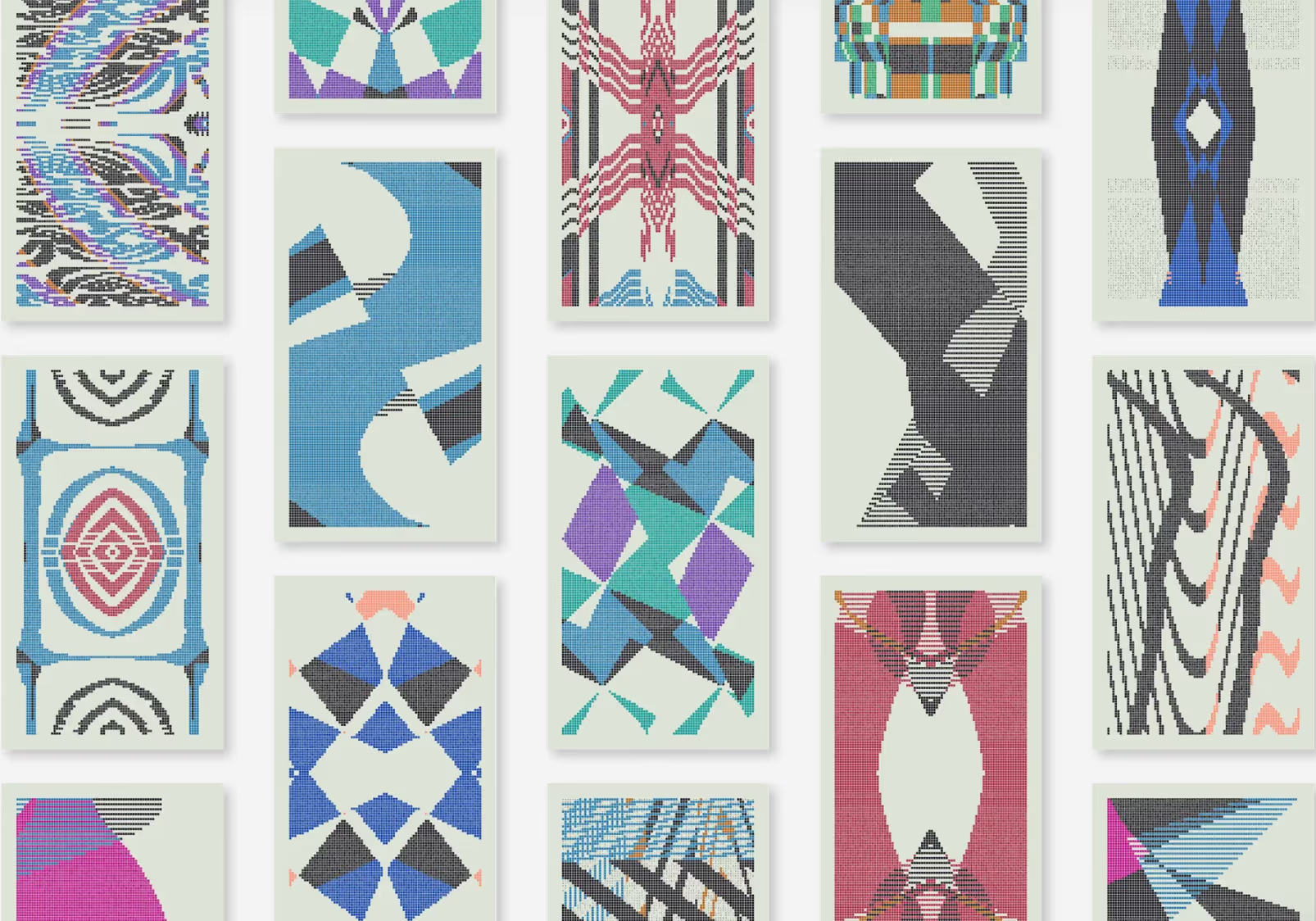
Quine by Larva Labs is the final entry in the Art Blocks curated series, a project that underscores that all the works on the Art Blocks platform are generated directly from code with no artist supervision.
Quine extends the computer science concept of self-replicating programs into visual art, where each work incorporates its own source code into a pixel grid and is capable of recreating itself. The code and its visual output, which are typically held separate in generative art, become entwined and indivisible.
While some are “Perfect-Quines” that reproduce themselves exactly, others cycle through multiple generations – its "quinity" before returning to its origin state.

Quine by Larva Labs is the final entry in the Art Blocks curated series, a project that underscores that all the works on the Art Blocks platform are generated directly from code with no artist supervision.
Quine extends the computer science concept of self-replicating programs into visual art, where each work incorporates its own source code into a pixel grid and is capable of recreating itself. The code and its visual output, which are typically held separate in generative art, become entwined and indivisible.
While some are “Perfect-Quines” that reproduce themselves exactly, others cycle through multiple generations – its "quinity" before returning to its origin state.

Each of the 497 Quines is a self-replicating code artwork where the visual pattern contains the actual program that generated it. Rather than creating the artwork directly, the main generator constructs a much smaller, specialized program that produces the visual output, including a layout of its own source code into the work, as well as the mechanism to reproduce itself. Some reproduce themselves exactly, others cycle through multiple iterations before returning to their original state, and a rare few generate unlimited variations without ever looping back.
Collectors who own Quines that cycle through multiple iterations can use Art Blocks' post params feature to select which iteration displays as their piece's main image on marketplaces and galleries. This on-chain selection can be changed at any time after purchase.

Larva Labs is the creative duo of Matt Hall and John Watkinson, technologists and artists known for pioneering blockchain-based art projects including CryptoPunks, Autoglyphs, and Meebits. Meeting as computer science students in the 1990s, they founded Larva Labs in 2005 and have since explored code as their medium, creating work that blends technical challenge with collective experimentation.
Their projects have become touchstones in the history of digital art, entering permanent collections at the Centre Pompidou the Whitney Museum of American Art, the Los Angeles County Museum of Art, the Institute of Contemporary Art in Miami, and ZKM Karlsruhe, among others. Larva Labs has been featured in major exhibitions worldwide and spoken at institutions such as MIT Media Lab, Stanford, and Art Basel Miami, but they describe themselves simply as "two guys working on computers."

"Quine makes code alive as both medium and subject, creating a strange loop where the artwork contains the instructions for its own existence. This is closely analogous to how biological life reproduces itself. Each Quine functions simultaneously as executable code (the DNA) and typographic composition (the cell)."
- Larva Labs

